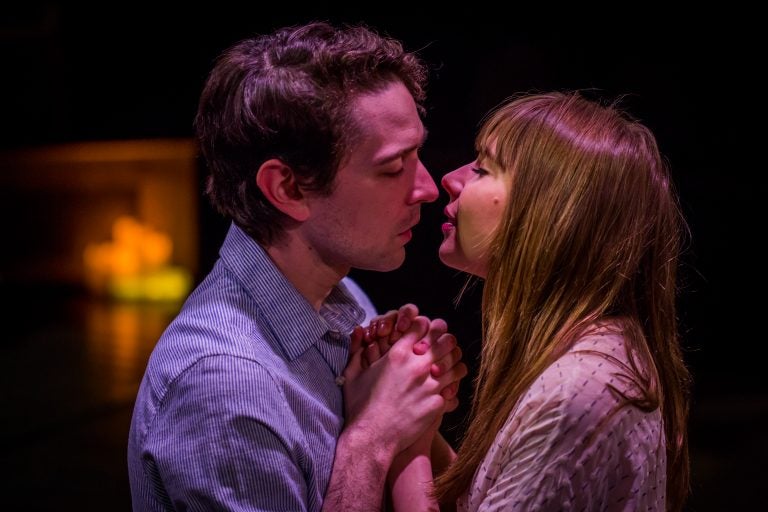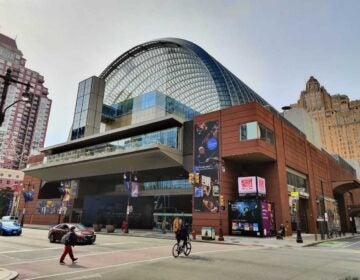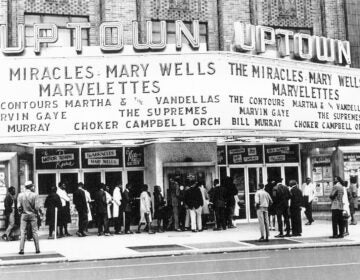”Tis Pity She’s a Whore,’ controversial for almost 400 years, from Philadelphia Artists’ Collective
The play has been the object of scorn and disgust for its subject matter and even for its title. But this flawed presentation satisfies as a glimpse of theater history.

Trevor William Fayle and Stephanie Hodge as siblings in the Philadelphia Artists' Collective production of "'Tis Pity She's a Whore." (Photo courtesy of Wide Eyed Studios)
A young man with raging hormones is wildly, unwaveringly in love … with his sister. This is a problem. But at least his misery has company: When he tells her of his rampant desire, his sister responds that she, too, is unwaveringly in love with him. The young man then confesses to his priest. The priest offers tortuous images of hell. The young man laughs them off.
If this sounds like the newest Netflix six-part series, it could be — incest may be TV’s final frontier. But Netflix has no such plans, and besides, the channel has been beaten by almost 400 years. The young man, his sister, the priest, and a slew of other characters are part of “‘Tis Pity She’s a Whore,” a blood-soaked tragedy written by the 17th-century British playwright John Ford.
Over time, the play has been the object of scorn and disgust for its subject matter and sometimes even for its title. It’s only occasionally produced. All of that makes “‘Tis Pity She’s a Whore” a natural choice for the adventurous Philadelphia Artists’ Collective, which exists to unearth long-buried gems. I wouldn’t call “‘Tis Pity” a gem, but I’m glad for the chance to see it for its historical value and more, and to make the obvious comparison with the work of Shakespeare, still writing a couple decades before the play debuted.
The Collective’s uneven “‘Tis Pity” opened last weekend, complete with irritating sound-design problems and unhinged accents. But some aspects of Jessica Bedford’s production — the way she fluidly moves 14 actors on and off a stage surrounded by the audience, and the way those actors embrace the play’s ever-increasing melodrama as a welcome challenge — force you to pay attention.
As does the incest. It’s easy to buy into Trevor William Fayle’s endearing vulnerability in his portrayal of the young man, Giovanni, and the startling innocence of Stephanie Hodge, who plays his sister, Annabella. When the two kiss — I mean really kiss — soon after discovering their mutual passion, it’s as uncomfortable to watch as it is sweet. No wonder audiences have reacted with revulsion to theater that makes you believe.
Even so, much of Ford’s play is difficult to accept. It’s the work of a writer who cannot find the nuance in characters he creates and whose way with our language pales against Shakespeare’s. “‘Tis Pity” is like watching the Bard in a sitcom version, but without the com.
The play is overwrought and overly fraught as its plot and subplots (an amusing one featuring the buoyant Josh Totora, a nasty one featuring a waspish Annette Kaplafka) build to tragedy. Characters take lots of time enacting their untimely deaths — some of these prolonged death scenes might be funny if Ford hadn’t created such a large-scale horrifying mess.
The most unfortunate aspect of the Philadelphia Artists’ Collective production is its sound. The actors’ lines are too often lost in the large room where they perform. Important dialogue, sometimes intimate, is almost completely lost. To get a real feel for Ford’s writing, I had to read the play after I saw it. (A free script is available on the Internet.)
Even given the production’s flaws, “‘Tis Pity” is satisfying as a glimpse of theater history. A look at the way John Ford explored one of the world’s biggest taboos – and in a much stuffier time – puts some perspective on a dynamic that continues with bold, new voices tackling tough issues on the stage today.
—
“‘Tis Pity She’s a Whore,” produced by Philadelphia Artists’ Collective, runs through April 14 at the Philadelphia Boys & Girls Choirs building, 1336 Spring Garden St. 267-521-2210 or philartistscollective.org.
WHYY is your source for fact-based, in-depth journalism and information. As a nonprofit organization, we rely on financial support from readers like you. Please give today.




